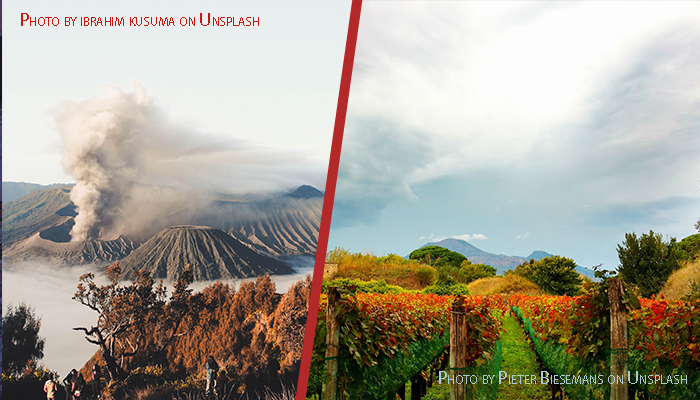
Why talk about wine on the GMPV blog? Well, this geologist-favourite drink is not only good memories of the EGU General Assembly but also a topic that spans among all the GMPV categories. Indeed, wine composition, flavour, structure and quality are inevitably bound to the mineralogy and geochemistry of the soil, making it so common and appreciated since ancient times.
And what gives us a nice complexity in mineral content? Volcanoes, of course! Some of the best wines in the world are obtained from grapevines laying on a volcanic substratum, and even ancient Romans were aware of these properties. Farmers from Rome moved to the area of Mount Vesuvius, well known for its eruption in 79 AD, already in the 3rd century BC. Indeed, there are several archaeological finds in the region, such as the villa in the town of Mondragone (Ciafardini, 2018), where Romans produced one of the most appreciated wines of ancient time, the Falernum. This wine was then exported all over Europe, as evidenced by inscriptions on an amphora identified in Colchester (UK) (Sealey & Davies, 1984).
In this first blog post about volcanoes and wine, we will have a look at the importance of volcanic material for soils and mineral content. So, why are volcanic areas so suitable for wine production (and agriculture in general)?
Volcanic Areas
Volcanoes are distributed around the globe both in subaerial environments and on the seafloor. Even though the majority of active and extinct volcanoes lie under the seafloor, the subaerial volcanoes, active during the last 10,000 years, are worldwide more than 1.5 thousand (Crisp, 1984; Small and Naumann, 2001).
If we compare the global distribution of the volcanoes with the global density distribution of the population (Fig.2) we can make some considerations.
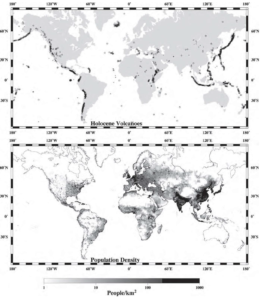
Fig.2 The global distribution of Holocene volcanoes and human population. . Updated to 2001. (From: Small and Naumann, 2001)
According to Freire et al (2019), in 2015 a significant part of the global population (around 8%) lived close (within 100km) volcanoes that have produced at least one important eruption, and more than the 14% (corresponding to more than 1 billion individuals) lived within an area of 100 km from a Holocene volcano, with the population more densely concentrated between 10 and 20 km from the volcanic centres (Freire et al., 2019).
Moreover, the growth rate of the population is also higher in these areas, like in Southeast Asia, where it has increased within 10 km from the volcanoes over the last 40 years.
In this map (Fig.2) we can see the distribution of Holocene volcanoes against the population density, updated to 1995.
Everyone knows how dangerous it is to live near volcanically active areas, and how devastating some eruptions can be for the communities living in their proximity. Moreover, an increase in population is also responsible for an increase in volcanic risk, increasing the amount of infrastructure, resources and people threatened by volcanic activity. consequently, a question might arise…
Why would people want to live in close contact with these lava giants?
Different are the benefits provided by volcanoes to the community. The most important of which is the provision of nutrients to agricultural soils, making these soils particularly productive and able to sustain high population densities (Shoji et al., 1993; Dahlgren et al 2004; Neall, 2009; Freire et al., 2019). Of course, other important factors positively influence communities located near volcanoes. Indeed volcanic centres might be also related to ore deposits and then to resource extraction, but also to the production of geothermal energy and of course tourism (Freire et al., 2019).
Volcanic Soils
So, what makes volcanic soils so special?
Let’s start first with a quick definition of soil.
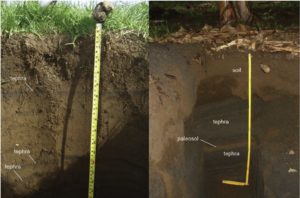
Fig. 4 – Andisol profiles: (left) soil under grassland from southeast Iceland. Several thin, dark tephra layers are visible and (right) soil under
banana culture from the Mungo Plain in Cameroon. Delmelle et al., 2015
The soil is the most superficial layer of the earth’s surface and can be defined as an elaborated combination of all three states of matter, i.e. a solid (e.g. organic matter and minerals), liquid (e.g. water) and gaseous (e.g. air) phase (Strahler, 2013; Maltman, 2018).
One of the crucial components of the soil for plant growth is the humus, made up of a fine mix of partially decomposed organic matter and minerals (Strahler, 2013; Maltman, 2018).
Soil is essential for the plants, which strictly depends on it (Strahler, 2013). Indeed, plants, and in our case grapevines, need the soil as a physical medium that sustains them and in which they grow but also as a resource of water and nutrients (Maltman, 2018). For this reason, soil is also essential for human life.
soil is the reservoir of life
– J.A. Toogood
civilization itself rests upon soil
– Thomas Jefferson
Let us now return to our volcanic soils and try to understand why they are so important for our society, why, despite the risk involved in living near volcanic areas, various populations often tend to concentrate around them and, above all, what role they play in the growth and development of vineyards and in the production of our favourite drink, wine.
After an eruption and subsequent tephra depositions, the process called “andosolization” takes place, with the formation of noncrystalline materials and the accumulation of organic matter. These processes are bringing to some of the most unique properties that make volcanic soils so peculiar: high water and phosphate retention, low bulk density,high friability, highly stable soil aggregates and excellent tilth (Shoji et al., 1993, Dalhgren et al., 2004).
An important benefit of volcanic soils is the low content in clay, preventing the spreading of the insect phylloxera. Phylloxera vastatrix (which means “the devastator”) is an aphid that attacked and destroyed most of the vineyards in Europe in the late 1800s. However, grapes planted in extremely sandy soils and/or with poor content in clay survived. This aphid prefers clay soils for the presence of cracks, which are providing a fast way for the insect to the roots. Moreover, the preservation of the vines from the phylloxera made it possible to identify on volcanic flanks centenary grapes.
We might understand the importance of these soils just thinking that even if they cover around 0.7% of the world they can sustain more than 10% of the population (Soil Survey Staff, 1999; Delmelle et al., 2015)
It is also very important to underline that not all volcanic soils are fertile, and the fertile ones might also deteriorate over time for both natural causes and/or incorrect human use of the soil. For that reason, it is very important to properly manage this natural resource. (Delmelle et al., 2015).
Does wine have a mineral taste?
Grapevines need soil to grow, and we saw how volcanic soils might help the development of these precious plants. They are resistant to water erosion, are good accumulators of organic matter, and are also good at retaining water and nutrients (Shoji et al., 1993; Dalhgren et al., 2004; Delmelle et al., 2015).
But do they also play a role in the wine taste?
Pretty often a role of geology is attributed to the flavour of wine, and a lot of time this role is ascribed to inorganic minerals (Maltman., 2008; Maltman, 2018), but is that true?
First of all, we should define minerals: as also underlined by Maltman (2018), some confusion might arise when we talk about minerals and wines. The crystal components that aggregate together to form rock is what defines a mineral in a geological sense (Quartz, Plagioclase, Olivine, Pyroxene etc.,). But sometimes people may also refer to minerals in a more “nutritional way”, and all the chemical elements fundamental in the development of the grapevine might be called nutrient minerals or simply minerals.
Quoting a very good example in the book of Alex Maltman “Vineyards, Rocks & Soil” (that we strongly recommend if you are interested in this topic):
A breakfast cereal might be ‘enriched with minerals.’ This doesn’t mean that pyrite or feldspar is mixed with cornflakes; rather, the analysis is telling us how much iron, sodium or zinc the packet contain
-Alex Maltman
So, if we mean that geological minerals play a role in the mineral taste in wine, well, geological minerals are not taken from the grapevine roots and they are often not soluble in water and tasteless, so they cannot play a role in the wine flavour.
Tasting the limestone may sounds romantic, but is not different then saying you can taste the 30° slope and the 220° aspect
–Kevin Pogue, 2017, Oregon Wine Symposium
We might believe that if there are plenty of geological minerals consisting of nutrients such as potassium and magnesium, then the soil is enriched in them. This is not properly true, an element to be taken from the roots must be available for the plant, and if the elements are trapped inside the crystal structure… they won’t be!
Moreover, if a soil has a very huge amount of available nutrient elements (which means very fertile soil) this might not be good for the wine leading to high vigour plant but with low-quality grapes (Maltman, 2018).
But we know that often volcanic soil has a good combination of properties and a good mix of nutrients. So if we mean for minerals this mix of nutrient elements in volcanic soil, is this going to impact the flavour? Is there a clear mix of flavour, typical of volcanic soil, related to these minerals?
Basically, the plant does not care where the element came from, if the magnesium came from a sedimentary or volcanic rock, for the grapevine, it is just magnesium… the same element it needs to grow!
And also these elements are tasteless and present in very low concentrations. So relating the taste of wine with the element’s content or the mineral composing the soil is not scientifically supported.
What else can we say about the relationship between wine and minerals?
But wait! Even if this might sound sad, we can still make some speculations!
Most of the wine flavours form during the vinification, thanks to the formation of different compounds responsible for the wine taste. Nutrient minerals participate in the formation of such compounds, and we don’t know yet if a variation in mineral amount affects somehow the final concentration and combination of these compounds and then the taste of wine.
So, how important the nutrients mineral variation is for the wine flavour remain, for the moment, just speculation! But maybe, for future researchers or perhaps for you, it might be a very nice field to investigate, maybe for a PhD! A beautiful study between Wine and Volcanoes!
Volcanic Soils remains an incredible resource in wine production, which has its root in ancient history, producing several very good quality wines and millenary vineyards. In “Volcanoes and Wine, Part 2” we will introduce you to some examples of Volcanic Wines and the geology behind them.
Until then…Cheers!
References
- Ciafardini, E. (2018). Un complesso produttivo nell’ager Falernus: contestualizzazione e nuovi dati archeologici . O T I V M, 4(4).
- Crisp, J. A. (1984). Rates of magma emplacement and volcanic output. Journal of Volcanology and Geothermal Research, 20(3-4), 177-211.
- Dahlgren, R. A., Saigusa, M., & Ugolini, F. C. (2004). The nature, properties and management of volcanic soils. Advances in agronomy, 82(3), 113-182.
- Delmelle, P., Opfergelt, S., Cornelis, J., Ping, C., (2015). Volcanic Soil in The encyclopedia of volcanoes (Chapter 72). Elsevier.
- Freire, S., Florczyk, A. J., Pesaresi, M., & Sliuzas, R. (2019). An improved global analysis of population distribution in proximity to active volcanoes, 1975–2015. ISPRS international journal of geo-information, 8(8), 341.
- Maltman, A. (2008). The role of vineyard geology in wine typicity. Journal of Wine Research, 19(1), 1-17.
- Maltman, A. (2018). Vineyards, rocks, and soils: The wine lover’s guide to geology. Oxford University Press.
- McDaniel, P.A.; Lowe, D.J.; Arnalds, O.; Ping, C.-L. 2012. Andisols. In: Huang, P.M.; Li, Y; Sumner, M.E. (editors) “Handbook of Soil Sciences. 2nd edition. Vol. 1: Properties and Processes”. CRC Press (Taylor & Francis), Boca Raton, FL, pp.33.29-33.48.
- Neall, V. E. (2009). Volcanic soils. Land use, land cover and soil sciences, 7, 23-45.
- Sealey, P., & Davies, G. (1984). Falernian Wine at Roman Colchester. Britannia, 15, 250-254. doi:10.2307/52660
- Shoji, S., Dahlgren, R., & Nanzyo, M. (1993). Genesis of volcanic ash soils. In Developments in Soil Science (Vol. 21, pp. 37-71). Elsevier.
- Small C. & Naumann. T (2001) The global distribution of human population and recent volcanism, Global Environmental Change Part B: Environmental Hazards, 3:3, 93-109, DOI: 10.3763/ehaz.2001.0309
- Staff, S. S. (1999). Soil taxonomy: A basic system of soil classification for making and interpreting soil surveys. Agriculture handbook, 436.
- Strahler, A. H., & Strahler, A. (2013). Introducing physical geography. New York: Wiley.

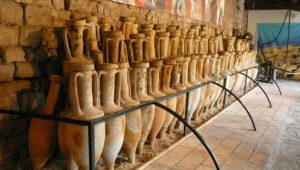
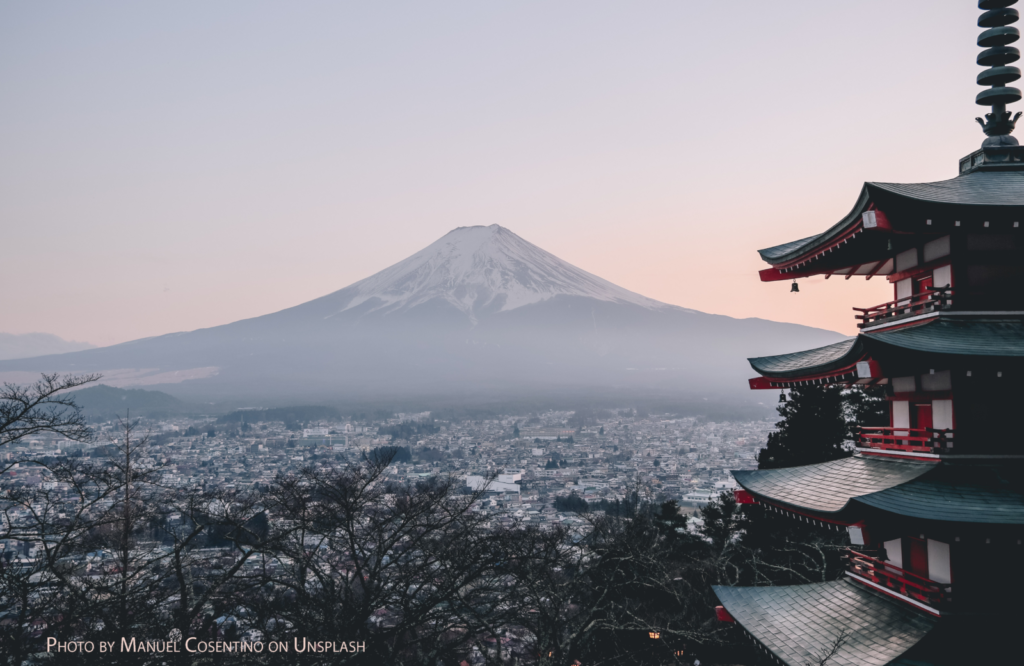


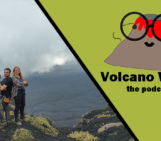
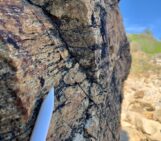
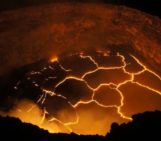
Pingback: Geochemistry, Mineralogy, Petrology & Volcanology | Volcanoes and Wines, Part 2
Pingback: GeoLog | GeoTalk: Meet Alessandro Musu, magma researcher & science communicator!
Pingback: Geochemistry, Mineralogy, Petrology & Volcanology | Living with a Volcano